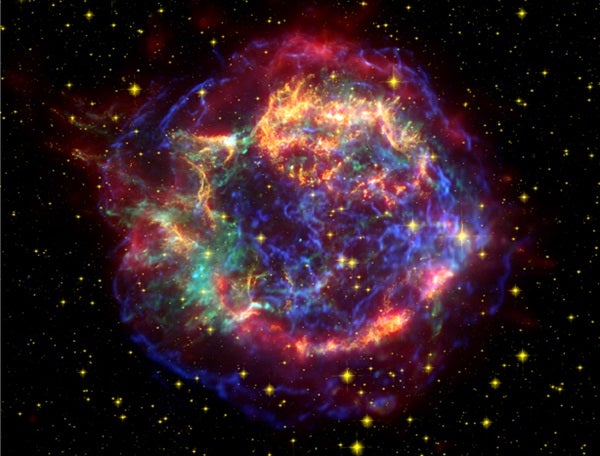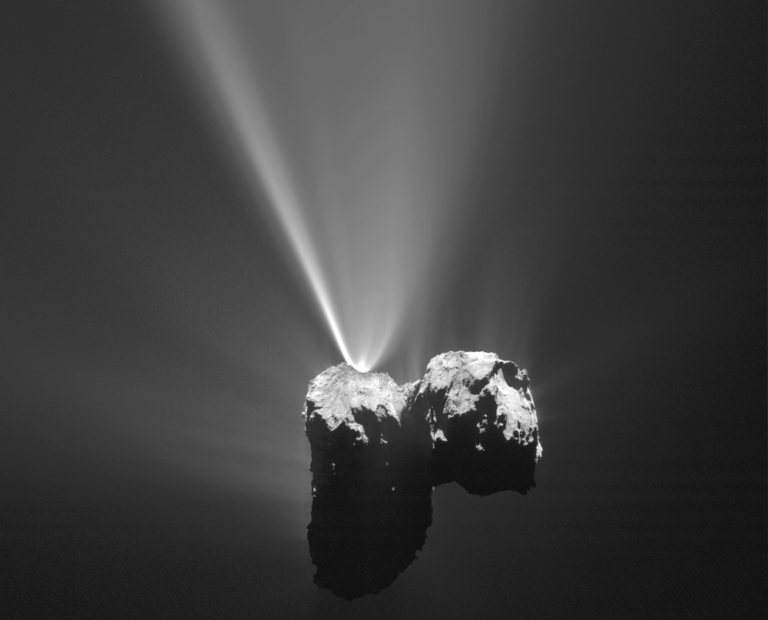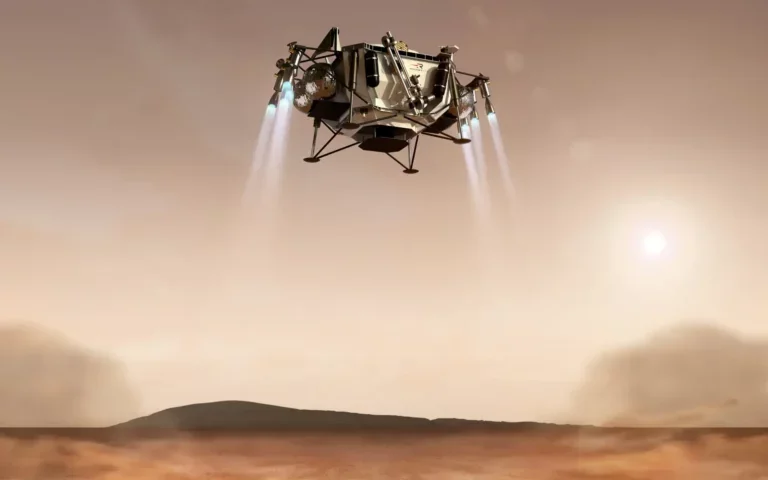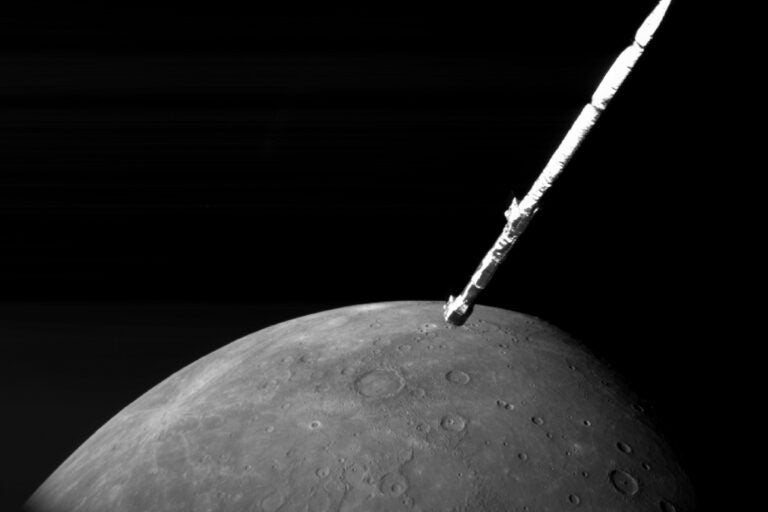A neutron star is a superdense remnant of a massive sun. A star that holds at least 8 times the Sun’s mass will burn through its material much faster than the Sun will. This massive star will then die dramatically as a supernova. This explosive event tears layers of gas away from the star, leaving behind its dense core.
The leftover neutron star is about 12 miles (20 kilometers) in diameter and holds between 1 and 3 times the Sun’s mass, approximately. It’s so dense that a teaspoon of this matter weighs about a billion tons. A neutron star’s density increases toward its center, where it holds a fluid of electrons, protons, and neutrons.
Astronomers have found neutron stars at the cores of several supernova remnants. One example is Cassiopeia A, which formed from a star that exploded about 330 years ago. The central turquoise dot corresponds to the neutron star. G11.2–0.3 is another supernova remnant that harbors a central neutron star. It glows light blue in this image.
Neutron stars also spin quickly. The Crab Nebula contains a central pulsar that rotates about 30 times a second. This central object spews high-energy particles into the expanding supernova remnant. Astronomers know of one neutron star that completes more than 700 rotations in 1 second, called PSR J1748–2446ad. Scientists discovered it in the star cluster Terzan 5 in 2004. So how can a neutron star spin so fast? All stars are born spinning, so as the original massive star collapsed into a neutron star, its rotation rate increased in the same way a figure skater spins faster as she pulls her arms in.
The collapse also condenses the massive star’s magnetic field lines: A neutron star has a magnetic field about 1 billion times stronger than our Sun’s. If its magnetic axis is not aligned with its spin axis, then as the star rotates, observers at Earth see pulses that correspond to energy emitted from its magnetic poles. (Think of this process as a lighthouse effect.) This property gives this class of neutron stars the name “pulsar.” Astronomers know of about 2,000 of these rotation-powered pulsars.
A type of pulsar called a magnetar appears to have an even stronger magnetic field than regular neutron stars — about 100 to 1,000 times more powerful. Scientists estimate such objects have extreme magnetism from observations that magnetars spin slower than other neutron stars. Astronomers know of about 16 of these objects. Occasionally, a magnetar emits a giant blast of high-energy radiation. One such event, in December 2004, emitted more energy in a matter of seconds than the Sun produces in 150,000 years. Don’t worry, though, none of these extreme magnets lie near Earth.
Expand your knowledge at Astronomy.com
Check out the complete Astronomy 101 series
Learn about our stellar neighborhood with the Tour the Solar System series
Read about the latest astronomy news










